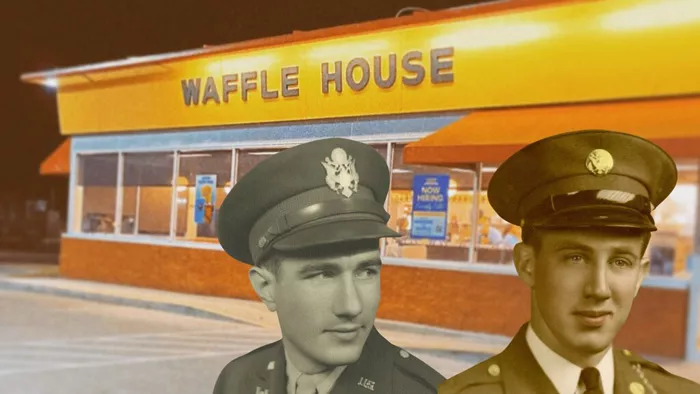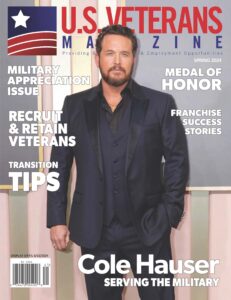Nary a soul has been stationed at a military base or made it through four years of college without stumbling one drunk Saturday night into the 24-hour greasy spoon chain known lovingly as “Waffle House.”
With more than 2,000 locations across 25 states, it’s safe to say that the humble breakfast haunt is really more of an empire than a mom-and-pop shop. But it wasn’t always that way. The first Waffle House was actually opened by two veteran neighbors in the small town of Avondale Estates, Two World War II veterans opened the first Waffle House in 1955. (Sarah Sicard/Waffle House via Canva)
Georgia, in 1955. “Tom Forkner joined the military and served in military intelligence and security based out of Oak Ridge, TN,” according to Njeri Boss, Waffle House’s vice president of public relations.
Drafted into the Army in 1941, he covertly worked to transport valuable products from a “Tennessee facility to Los Alamos,” according to the Atomic Heritage Foundation. He eventually was sent to work on the infamous Manhattan Project, where he served until heading home and taking his place with his family’s real estate business.
His eventual partner, Joe Rogers Sr., enlisted with the Army Air Corps at age 16.
“The bulk of his service was in the Army Air Corps where he trained to fly BT-9s, B-29s, AT-17s and B-24s,” Boss said. “When his military service ended in 1945, I believe he was a B-24 pilot instructor with the Eighth Air Force at Smyrna Airfield. He achieved the rank of at least Captain during his service.”
The pair met in 1949 when Rogers moved to Georgia. Wanting to do something different and create an environment where friends and family could come together and eat, they opened a 24-hour diner-style joint in their Atlanta suburb and painted the sign bright yellow to attract the eyes of drivers.
Its reputation for being the best place for late-night food and overall popularity led Forkner and Rogers to begin franchising Waffle House in 1960.
And while the times have changed greatly since that first greasy spoon opened in the 1950s, much of the Waffle House aesthetic and menu has stayed the same.
“We serve the basic foods, and the basic foods never change,” Rogers told NBC.
Alas, the iconic restaurateurs both passed away in 2017, but their waffle legacy lives on in the hearts of troops in dire need of hash browns and syrup boats after a night of barracks shenanigans.
Click here to read the original article posted on Military Times.



